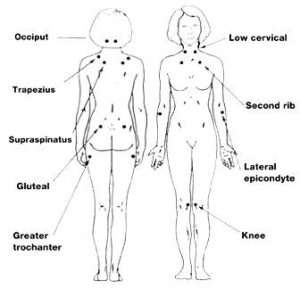Low Level Laser Therapy Provides An Effective Drug-Free, Safe Resolution Option For Bursitis
Bursitis Treatment using Low Level Laser Therapy
Bursitis of Shoulder, Hip (Greater trochanter), Knee, Achilles tendon and Foot can be successfully treated with LLLT to achieve resolution.
tendon and Foot can be successfully treated with LLLT to achieve resolution.
Low Level Laser Therapy (LLLT) is the application of red and near infrared light over injuries to stimulate cellular repair. LLLT has a powerful anti-inflammatory effect as well as a healing effect on inflamed bursae and surrounding inflamed soft tissues. LLLT is completely safe and has no effect on normal tissues.
What Is Bursitis?
Bursitis is an inflammation or irritation of the bursa.
A bursa is a thin bag filled with lubricating fluid which reduces rubbing and friction between tissues such as bone, muscle, tendons, and skin.
What Parts of the Body Does Bursitis Affect?
- Shoulder
- Hip (Greater trochanter)
- Knee
- Achilles tendon
- Ischial tuberosity (Sitting bone)
What Causes Bursitis
Bursitis is most often caused by repetitive strain and overuse of the overlying tendons and muscles which inflame the related bursa. It can also occur after a sudden, more serious injury.
Age also plays a role. As tendons age they are less able to tolerate stress, are less elastic, and are easier to tear. This can put stress on the bursa causing bursitis. An inflamed arthritic joint can similarly irritate a bursal sac.
Overuse or injury to the joint at work or play can increase a person’s risk of bursitis. Examples of high-risk activities include gardening, raking, carpentry, shovelling, painting, scrubbing, tennis, golf, skiing, and throwing. Incorrect posture at work or home can also lead to bursitis. Inflammation of, or injury to, related muscles and tendons irritate the bursa impinging on it and restricting its area.
Sometimes the reason is unknown. It can also be associated with some chronic systemic diseases.
Bursitis is more common in adults, especially in those over 40 years of age.
What Are the Symptoms of Bursitis?
Bursitis causes pain in the joint of the inflamed bursa which may build up gradually or be sudden and severe. Pain is aggravated during or after activity and often the joint is stiff the next morning with reduced range of movement.
How is Bursitis Treated?
Traditionally, treatments for bursitis consist of temporary pain relief using anti-inflammatory medication, rest, and icing the area. While ice numbs the pain it also prevents healthy blood flow which is essential to providing oxygen and nutrients to the area to heal it, and remove waste products and CO2. Ice should therefore not be applied to injuries after the acute phase (the first day). Read more here.
Pain killer medication just masks pain temporarily which is appropriate to alleviate suffering but does not enhance tissue healing. Anti-inflammatory medication such as Ibuprofen and Diclofenac, used for more than even a week can cause a host of side-effects in the body and can be injurious to your health. These medications also do not improve healing and have actually been shown to slow it down.
Corticosteroid (cortisone) injections are also used to assist in the treatment of bursitis. These can be painful and the procedure carries risks such as increase in pain (“steroid flare”), skin discolouration at the injection site, nerve damage, infection, to name a few.
Low Level Laser Therapy (LLLT) is the application of red and near infrared light over injuries to stimulate cellular repair. LLLT has a powerful anti-inflammatory effect as well as a healing effect on inflamed bursae and surrounding inflamed soft tissues. LLLT is completely safe and has no effect on normal tissues.
the application of red and near infrared light over injuries to stimulate cellular repair. LLLT has a powerful anti-inflammatory effect as well as a healing effect on inflamed bursae and surrounding inflamed soft tissues. LLLT is completely safe and has no effect on normal tissues.
Inflammation is the body’s response to injury to attempt to heal it. But often the inflammatory reaction is excessive and this has a paradoxical inhibitory effect on the body’s natural healing mechanisms. This then perpetuates pain and dysfunction in the affected area. By improving circulation and increasing cellular repair functions LLLT provides an environment for your body’s own natural healing processes to be activated and restored. Once normal immune processes are restored, the excessive inflammation is reduced and healing can begin.
LLLT does not exert any physical force on the bursa. Manipulation of the bursa just aggravates it, so you don’t want to actually handle the bursa, but instead decreasing the inflammation enables faster healing.
LLLT stimulates blood flow and lymphatic drainage, improved delivery of O2 and nutrition to the area, oxygen utilisation, removal of oxygen-free radicals and other waste products, and tissue healing. Read more on how Low Level Laser Therapy works.
You will be encouraged to move the affected area within range of movement/pain but not exert stretch or force during the healing phase
The end result is resolution of inflammation and restoration of healthy bursa and local soft tissues. Once tissues are healed, pain is eliminated and normal range of motion and function is restored. Then muscle and tendon strength and flexibility can be addressed with graduated exercises and stretching.
LLLT has no known side effects, is safe and effective. By treating the underlying problem, LLLT results in relief of pain and restoration of function, assisting with issues such as knee pain, hip pain and bursitis related chronic pain.

